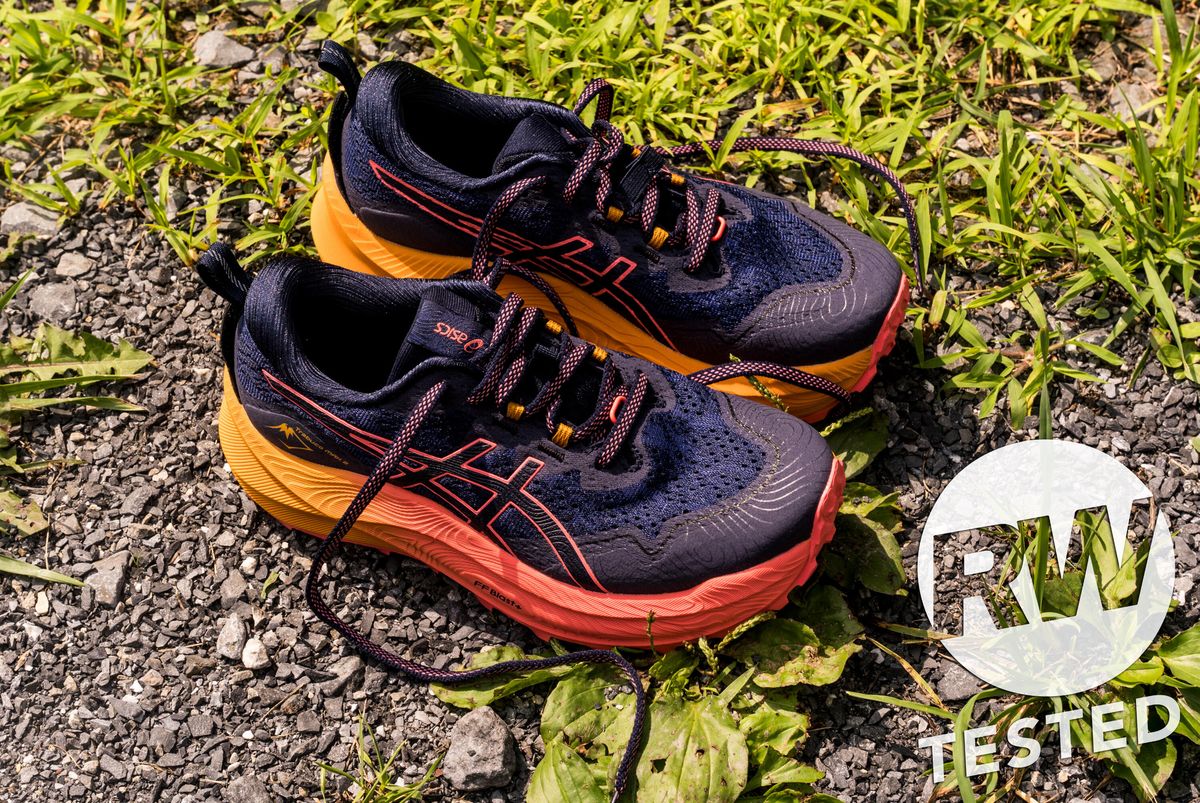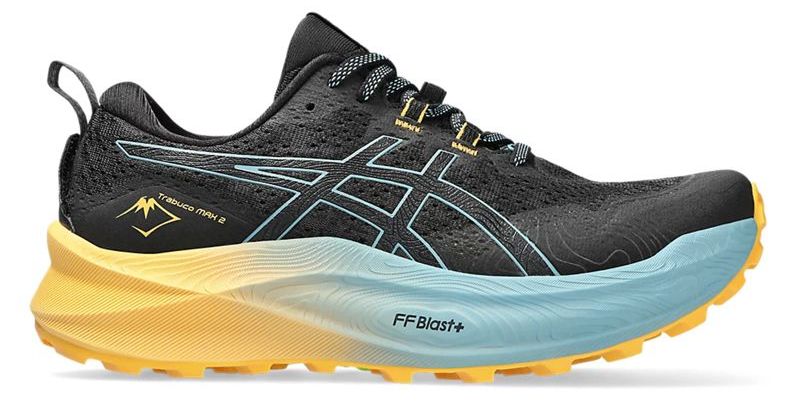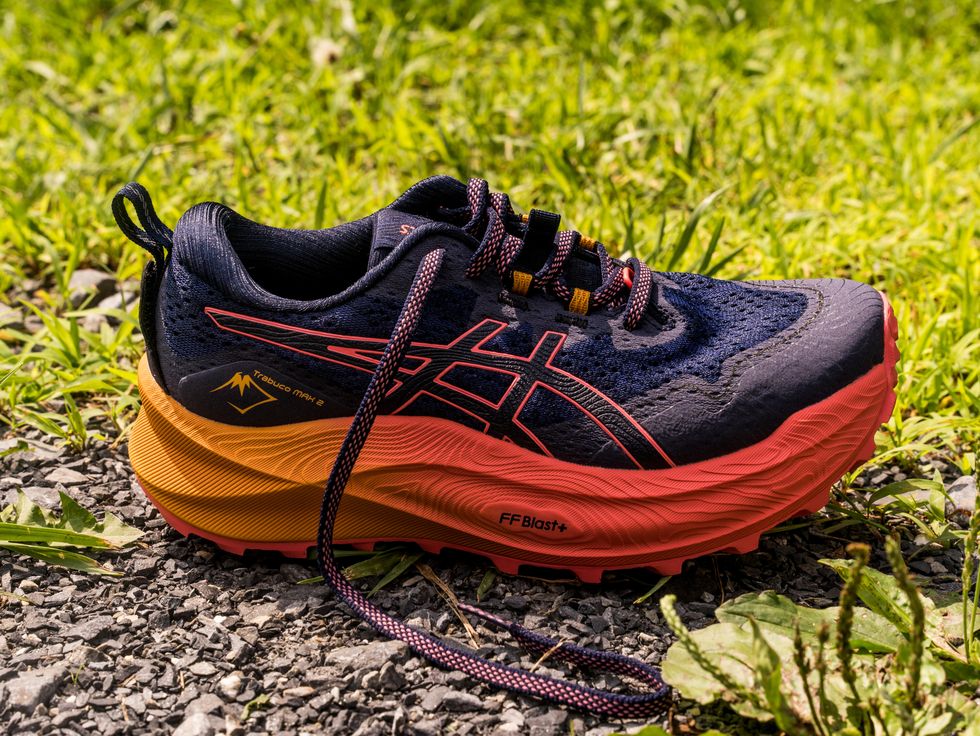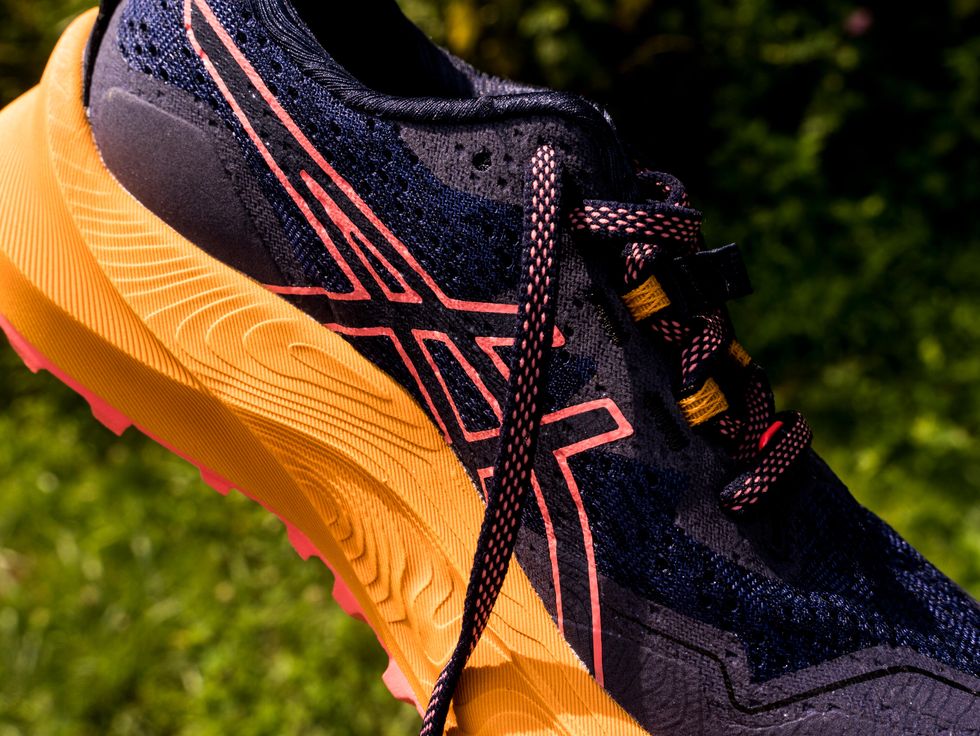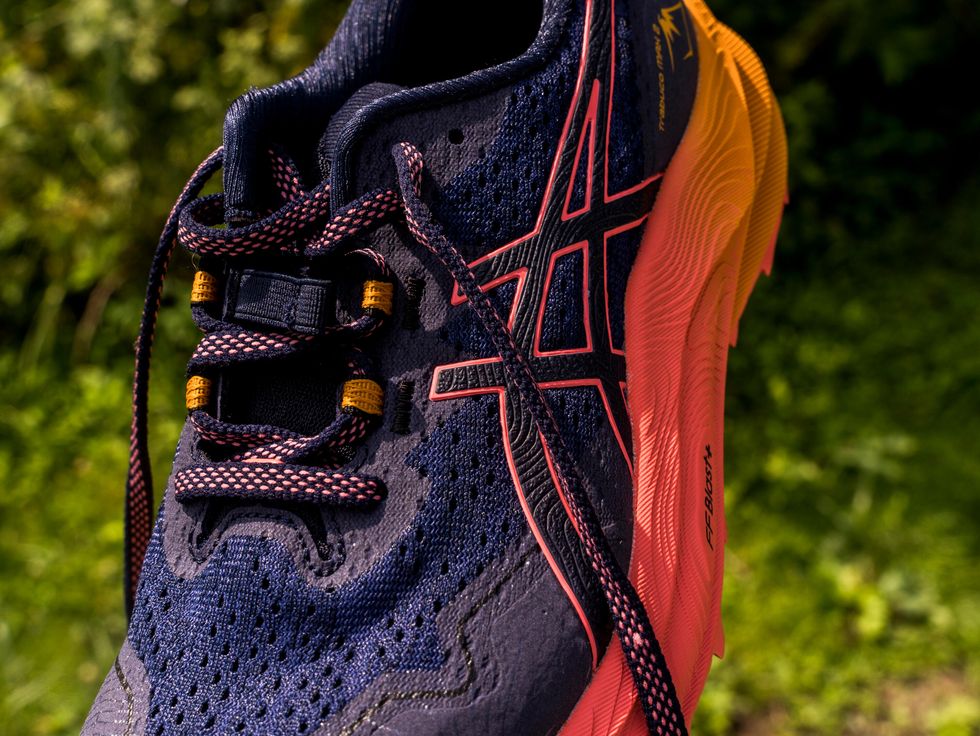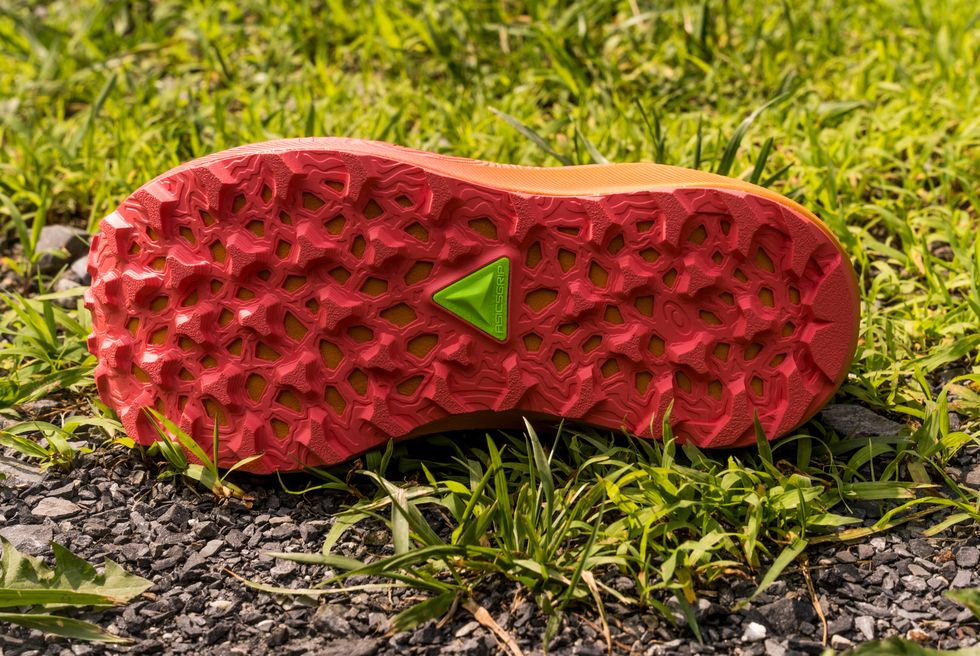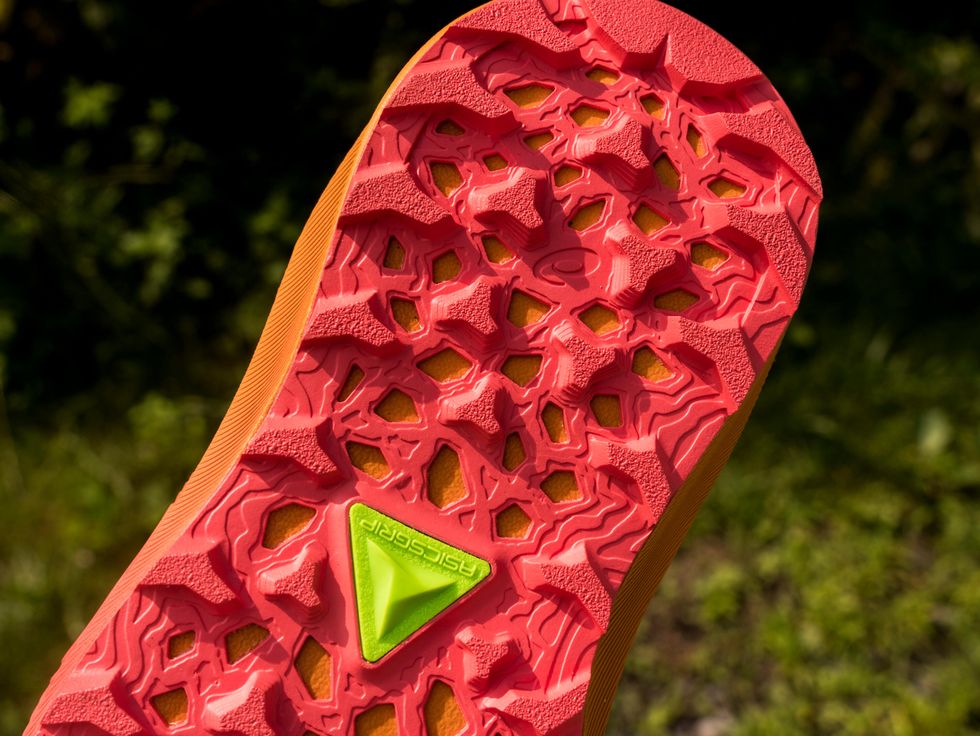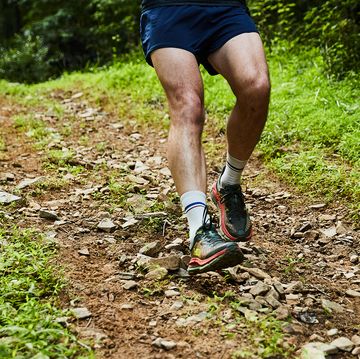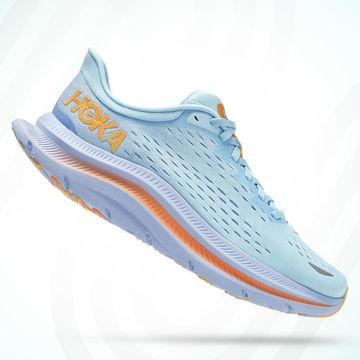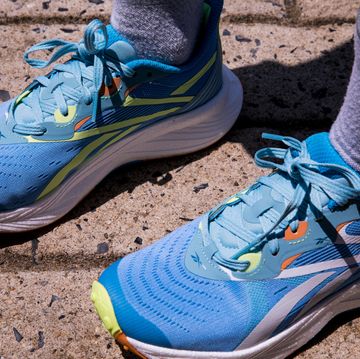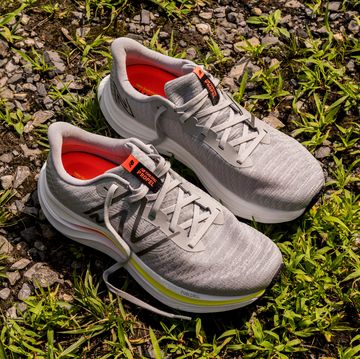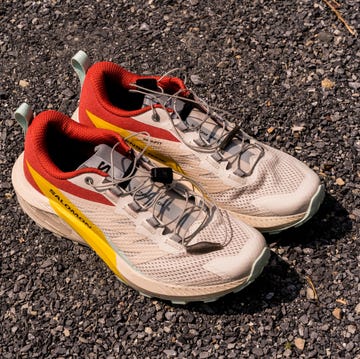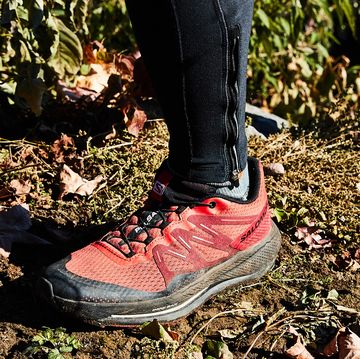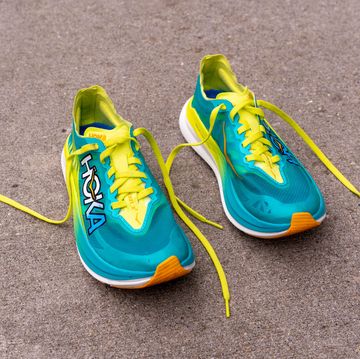You’ve never run in—or heard of—an Asics trail shoe? No worries if you’re late to the party. The brand’s trail models have been around for years, but they don’t generate the same hype as its road line. But that could change. The company has been quietly polishing its trail models, like the Asics Trabuco Max 2, enough to hang with the likes of established Salomons and Hokas.
- Who It’s For: Runners seeking the most cushioning possible for long trail runs
- Preceded By: Asics Trabuco Max
- For Runners Who Like: Altra Olympus 5, Hoka Stinson 6, Brooks Caldera 6, Topo Athletic Ultraventure 3, New Balance Fresh Foam X Trail More v3
- Key Features: GuideSole tech (rockered midsole with TPU plate), AsicsGrip rubber outsole, multidirectional 4mm lugs, gaiter attachments
- Midsole Foam: EVA-blend Flytefoam Blast+
Of course, the Cumuluses and MetaSpeeds continue to shine in the Asics hall of fame. But it’s possible they’ll need to share the spotlight with newcomers like the Trabuco Max. Runners, especially those just starting out off-road, want trail shoes that feel like their bouncy road trainers—but with a little more bite on the dirt. And that’s just what Asics offers with its foams.
More From Runner's World

Cushioning and Ride
Thick on the midsoles of the Novablast and Nimbus, Flytefoam Blast+ comprises the bulk of the Trabuco’s 43mm stack. The women’s heel height measures just one millimeter shorter than the men’s. (Trail and mountain runners are not limited by World Athletics regulations for sole thickness. While the standard Trabuco 11 has a 7mm lower heel height, both models will keep your finish time legal, by the book.)
The foam itself, which we believe to be a blend of EVA and Olefin, results in a soft and bouncy landing before the broad and stiff rocker sole rolls you through toe-off. It’s not a fast transition, but the ride feels smooth and stable, and more efficient than you’d expect from a hefty shoe. Partially, that’s because Asics borrows this rocker construction from its marathon road shoes, designed to conserve energy as you flex your ankle with each step.
Balancing Protection and Ground Feel
One tester liked the heaps of Flytefoam for its extra protection and resilience on an especially rocky section of the Appalachian Trail. “I am not the most light-footed trail runner, and the thick foam and plate protected me from feeling too much of the trail,” he said. “But that was also detrimental at points because sometimes I couldn’t gauge the terrain beneath me.” In that way, the Trabuco reminds us of the Brooks Caldera—max cush pillows for bounding along 50K and beyond, but less capable for anything super technical.
+/- Pro and Con: Wide Foot Fit
Another tester said that while he liked his Hoka Speedgoats for their lighter weight, they lacked the roomier toebox and plush tongue of the Trabuco. “Unlike my narrower Hokas, my size 10s were true to size and the perfect width for my wider-than-average foot,” he said.
However, our testers with average-width or narrower feet struggled to get a locked-in fit around the midfoot and heel of the shoe. “The shoes seemed wide and long. I felt like I had a lot of room upfront. Sometimes I felt like my foot was moving around. I have narrow feet so that could just be me,” said tester Rebecca Heflin who logs about 30 miles per week and runs with a neutral gait and midfoot strike.
“The toebox curves upward, so I didn’t actually catch anything with it. But I did feel my feet slipping and I would get a little area of raw skin from having my feet move around in the shoe,” she added. “Mostly, it was my heel that wasn’t fully secure on certain areas of the trail. I felt like I really had to yank the laces tight.”
To mitigate the midfoot and heel slippage, Rebecca tried wearing heavier socks to fill some extra space in the shoe. Another tester replaced the Trabuco’s already plush Ortholite sockliner with an even thicker insole. Both attempts had only limited success. For the best fit, you may want to go down a half size, especially if you have a lower-volume foot.
+ Pro: Grippy Lugs and Outsole
So did Asics bring it all home with the outsole? We think so. Called AsicsGrip, the rubber is a compound the brand mixes up in-house. It’s a bit softer, and as a result, also slightly less durable than, say, Vibram MegaGrip and Inov-8’s Graphene-infused rubber, but it doesn’t sacrifice much when it comes to traction. Three testers reported that grip on loose mud and wet surfaces was the Trabuco’s best feature.
“The tread really left me feeling in control of the shoe with the amount of grippiness it offered,” said one tester, who wore the shoe on multiple runs over four different East Coast parks and trail systems. “It also shed the dirt and mud as I went, which kept the sole from losing traction due to buildup.”
A clever three-pronged lug shape helps. Widely spaced and measuring 4mm tall, each stud anchors down and twists into slick terrain without pulling any sludge along for your next foot strike.
+ Pro: Good Road-to-Trail Versatility
The same tester also found that the thick and soft midsole foam absorbs the lugs a bit better on the roads, so they didn’t poke into her feet. We liked the sensation on our longer runs stringing together a handful of trail loops and intersecting trailheads, where we encountered miles of mixed hard and soft terrain.
“My favorite aspect of this shoe was probably the cushioning and comfort on any surface. I ran in these after some light snow. In places on my trail routes where I would usually be slipping, I found myself gripping the ground very well. They also gripped the road during dicy weather conditions, allowing me to still get quality training in,” said tester Francis Dougherty, who runs 60 miles per week at an average pace of 7:00 per mile.
“But even in good conditions, I would not pick this shoe for any speedwork or racing. The shoe didn’t quite feel slow, but it was definitely better suited for my easy everyday runs.”
Francis tells us that he runs with a slightly overpronated gait. Despite this, Francis said he did not experience any issues with stability while running on roads and trails in the Trabuco Max 2.
